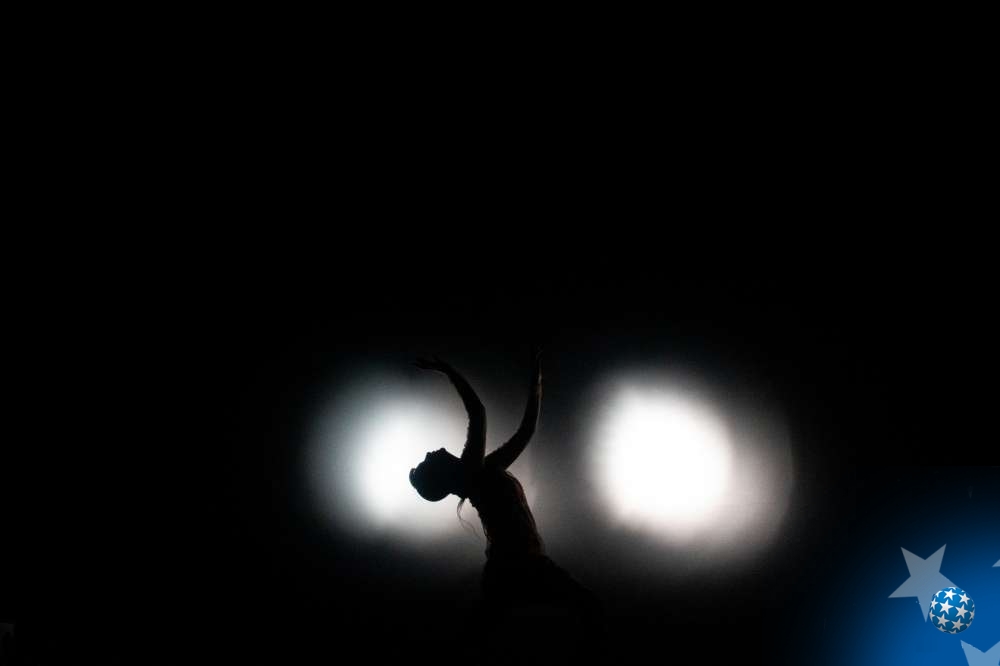A movement towards freedom
At the beginning, Ehsan introduced himself and told the audience a bit about his background. He started when he was very young, first as an actor, and then shifted to dance and choreography. He pointed out that the process of learning and training in Iran is complicated by numerous restrictions which caused many ups and downs, but that he always knew that dance and art are the way, and that it was worthwhile.
Ehsan also explained that through the message about the society of control and censorship, which this piece conveys, he is not offering a solution but initiates a reflection. A drone is a symbol of something which does not belong to a distant future anymore but to our reality, as implied by the social dystopia. Gilles Polet explained how they worked on the choreography, developing it from one movement by one limb. At some point, the movement would be interrupted by an invisible force from the outside which is preventing it from being completed. After the interruption, another limb starts a new movement which also gets interrupted and thus remains incomplete, then the next one, and so on. These, seemingly unnatural and unusual movements, were created in an attempt to find a way to avoid the outside force, to run away from it, in search for freedom. After perfecting this technique of interrupted movements, they built on it, adding unnatural, inorganic, and very unpredictable counting which is in disharmony with the music, and which does not follow any rules. This process symbolizes a constant attempt to find some freedom within censorships and surveillance.
That initiated the topic of censorship which is nowadays ubiquitous. Iran was taken as an example, although this performance was there not only allowed but also awarded, despite its provocative character in terms of Iranian standards.
Yasen talked about the dramaturgy, the poetics added to the dance element. They kept trying various options with poetry they had collected, but in the end went with certain elements and mixed them, thus creating the final product. Yasen and Ehsan announced their next collaboration, which is currently in the making and will premiere in October 2022.
The audience commented that the performance struck a good balance between the use of visual technology and dance as a theatre element, so that they do not clash but complement one another. Another comment was that a powerful symbolism was nicely conveyed, not too illustrative but enough to stir thoughts and feelings.
You can see the entire discussion at the link provided, or Bitef YouTube channel.
We asked the audience for their impressions.
Emil Matešić, art historian:
“I’d say it’s really good. I respect the way the choreographer took a movement typically used for hiding, escaping, or self-protection from an unknown power, and turned it into the choreography. I might be wrong that it lacked a bit of fluid, live, organic links between the segments, but there’s no play that has to be perfect. Alongside the stage design and new technological solutions, the choreographer managed to turn a higher context, the drone or the big controlling eye, into a piece of art. I appreciate the selection of this performance within the context of this Bitef.”
Stevanka Češljarov, a retired journalist
“I should say that technical effects contributed to the overall impression. The three participants are amazing, but I was fascinated by the technical effects, which round off the impression.”

